Why shipping container homes are overrated – Vox YouTube Channel
Category: Architecture
American Suburbs are UGLY and We Should Be Ashamed
American Suburbs are UGLY and We Should Be Ashamed – Peter Davies YouTube Channel
Motivation
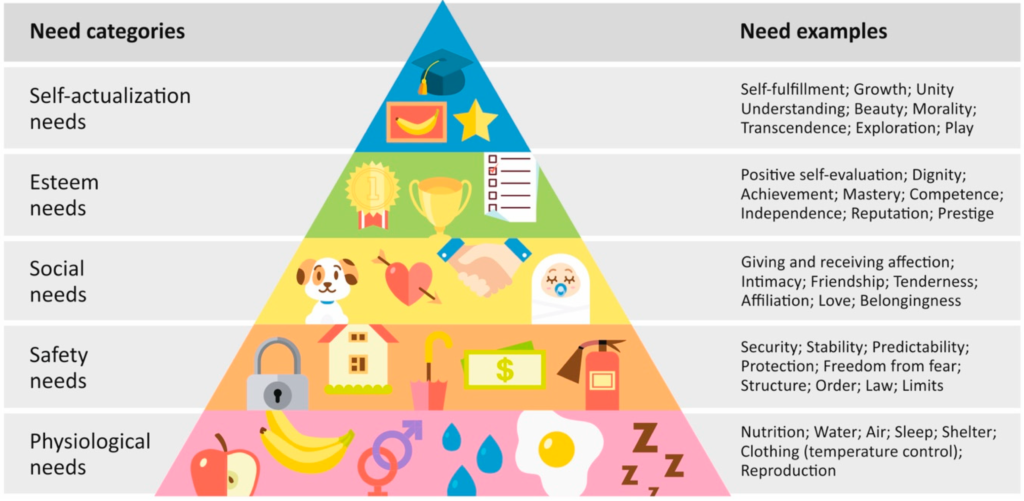
I) Deficiency Needs
A) Basic Needs
1. Physiological Needs
-
-
- Air
- Water
- Food
- Light
- Heat (and cooling)
- Clothes
- Shelter
- Rest/Sleep
- Urination/Excretion
-
2. Safety Needs
-
-
- Personal security
- Financial security
- Emotional security
- Health
-
B) Psychological Needs
3. Belonging Needs
-
-
- Family
- Friendship
- Love
- Intimacy
- Trust
- Acceptance
- Receiving and giving love and affection
-
4. Esteem Needs
-
-
- Self-Esteem
- Dignity
- Achievement
- Mastery
- Independence
- Esteem from Others
- Reputation
- Respect
- Status
- Prestige
- Self-Esteem
-
II) Growth Needs
A) Self-Fulfilment Needs
5. Cognitive Needs
-
-
- Knowledge/Exploration
- Understanding/Curiosity
- Meaning/Purpose
- Predictability
-
6. Aesthetic Needs
-
-
- Nature’s Splendor
- Built Environment Art
- Durable goods (pottery, basket-weaving, etc.)
- Landscaping
- Architecture
- Visual Art
- Drawings & Sculpture
- Photography
- Film/Video
- Auditory Art
- Music
- Poetry
- Literature
- Performing Arts
- Musical Performance
- Drama
- Dance
-
7. Self-actualization
-
-
- Realizing personal potential
- Self-fulfillment
- Seeking personal growth and peak experiences
-
8. Transcendence
-
-
- Service to others
- Pursuit of science
- Religious faith
-
The Right Roof
1.0 Petroleum-Based Roofs
(From: bobvila.com and other sources.)
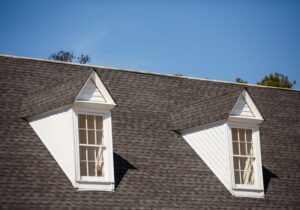
1.1 Asphalt Shingle Roof
Economical to produce, relatively easy to install, and widely available, fiberglass asphalt shingles are today’s most popular roofing material. Made of a woven fiberglass base mat, covered with a waterproof asphalt coating and topped with ceramic granules that shield the product from harmful UV rays, they are available in a full range of styles and colors to complement any home’s architectural style. Most are guaranteed to 30 years.
-
-
- Estimated Lifespan: 15-30 years
- Cost: $150 – $550 per square installed
- Frequent replacement cost every 10-20 years
- Re-caulking and sealing as roof ages
- Ends up in landfills after short lifespan where it can take 300 years to decompose
-
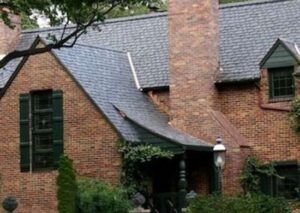
1.2 Composite Shingle Roof
If you want the look of slate, tile or wood shake—without the installation and maintenance costs, consider today’s composite roofing. Made from poly-based products, companies like CertainTeed, EcoStar and DaVinci Roofscapes all offer superior products that are lightweight, fade resistant, fire safe, and warrantied for up to 50 years. Some are so realistic that they have been approved for use in historic preservation!
-
-
- Estimated Lifespan: 15-40 years
- Cost: $400 – $800 per square installed
-
2.0 Combustible Roofs
(From: bobvila.com and other sources.)
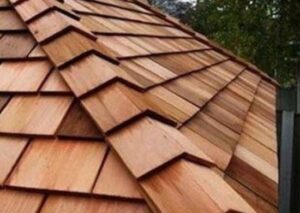
2.1 Wood Shingle Roofs
Wood shingles are machine-cut and tapered for a trim, crisp appearance. While not as practical as modern asphalt shingles, there is no denying the appeal of a wood roof on a traditional or historical-style house.
-
-
- Estimated Lifespan: 25-30 years
- Cost: $450 – $900 per square installed
-
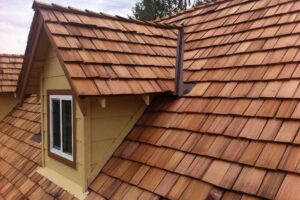
2.2 Wood Shake Roofs
Wood shakes are hand-split, giving them a more rustic appeal. While not as practical as modern asphalt shingles, there is no denying the appeal of a wood roof on a traditional or historical-style house.
-
-
- Estimated Lifespan: 35-40 years
- Cost: $600 – $900 per square installed
-
3.0 Noncombustible Tile Roofs
(From: bobvila.com and other sources.)
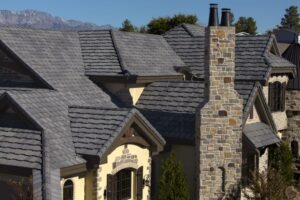
3.1 Concrete Tile Roofs
In addition to their intrinsic beauty, tile roofs are extremely durable, lasting for centuries in some cases. Individual tiles are often molded in barrel shapes for interlocking installation. Weight will be an issue, so be sure ask a structural engineer if your roof framing will support a tile application.
-
-
- Estimated Lifespan: 50 years
- Cost: $400 – $1,000 per square installed
-
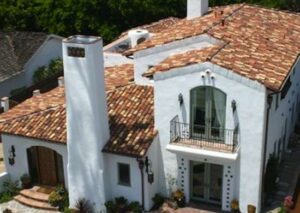
3.2 Terracotta (Clay) Tile Roofs
In addition to their intrinsic beauty, tile roofs are extremely durable, lasting for centuries in some cases. Individual tiles are often molded in barrel shapes for interlocking installation. Weight will be an issue, so be sure ask a structural engineer if your roof framing will support a tile application.
-
-
- Estimated Lifespan: 50-100 years
- Cost: $600 – $1,500 per square installed
-
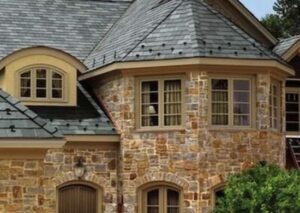
3.3 Slate Tile Roofs
Slate quarried for roofing is dense, sound rock, and is exceedingly tough and durable. While it is labor-intensive and costly to install, a natural slate look will give character to a building unlike any other roofing material. Available in an array of colorations, slate roofing is non-combustible, waterproof, and requires little to no maintenance over the course of its long life.
-
-
- Estimated Lifespan: 100 years or more
- Cost: $900 – $1,600 per square installed
-
4.0 Noncombustible Metal Roofs
(From: metalroofing.com and other sources.)
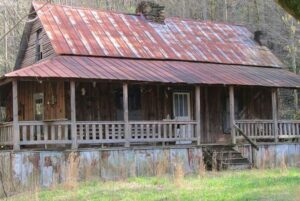
4.1 Tin Roofs
Tin is no longer used. Today, a “tin roof” might refer to steel.
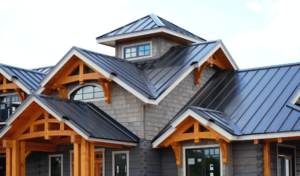
4.2 Steel Roofs
Steel is the most common type of metal roofing, available in different finishes.
-
-
- Estimated Lifespan: Average of 40 years
- Up to 30% energy savings
- Cost: $900 – $1,000 per square installed
- Improves home resale value
-
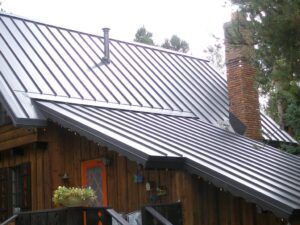
4.3 Zinc Roofs
Zinc is a very long-lasting and expensive roofing material that will patina and change color.
-
-
- Estimated Lifespan: 60-100 years
- Up to 30% energy savings
- Cost: $550 – $1,000 per square installed
- Improves home resale value
-
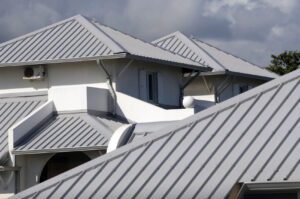
4.4 Aluminum Roofs
Aluminum is lightweight, does not corrode, and is compatible with coastal environments.
-
-
- Estimated Lifespan: Average of 50 years
- Up to 30% energy savings
- Cost: $1,000 – $1,250 per square installed
- Improves home resale value
-
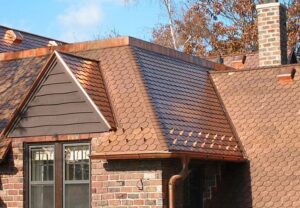
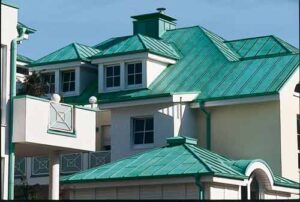
4.5 Copper Roofs
Copper is a very long-lasting roof that will develop a protective layer and change color. It is the most expensive roofing material.
-
-
- Estimated Lifespan: 50-100 years
- Up to 30% energy savings
- Cost: $1,100 – $1,500 per square installed
- Improves home resale value
-
5.0 Green Roofs
(From: greenrooftechnology.com and other sources.)
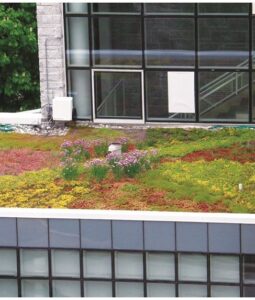
5.1 Extensive Green Roofs
An extensive green roof represents a natural form of vegetation that is largely self-sustaining and evolving. It is the most cost effective and most natural infrastructure to reduce stormwater run-off from buildings at the source.
-
-
- Variable energy savings
- Cost: Variable
-
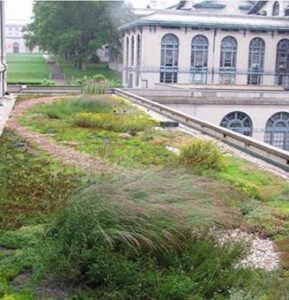
5.2 Semi-Intensive Green Roofs
A Semi-intensive Green Roof represents an enhanced natural form of vegetation, often self-sustaining and evolving. Certainly, it is still cost effective and a bio-diverse natural infrastructure to reduce stormwater run-off from buildings. Additionally, semi-intensive Green Roofs widely restore the environmental footprint of a structure, as it is proven to be rich in biodiversity and with high stormwater retention.
-
-
- Variable energy savings
- Cost: Variable
-
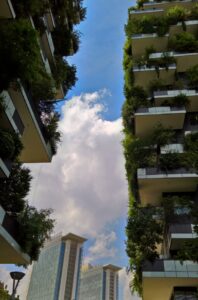
5.3 Intensive Green Roofs/Roof Garden
An Intensive Green Roof or Roof Garden includes unlimited plant and design varieties. Likewise in open space planning, which allows any form of vegetation. Intensive greening may consist of perennials, grasses, bulbs, summer flowers, shrubs and large trees. Because of high maintenance requirements, Lawn is considered an intensive Green Roof. However, the general maintenance of intensive Green Roofs without lawn is less than most people would expect. Of Course, this all depends on plant selection and overall design.
-
-
- Variable energy savings
- Cost: Variable
-
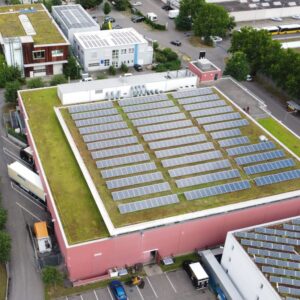
5.4 Solar Garden Roofs
Green Roof Technology’s Solar Green Roof solutions are innovative, penetrations-free, and for flat roofs, sloped or curved roofs. Furthermore, all solutions have Blue Green Roof options.
-
-
- Variable energy savings
- Cost: Variable
-
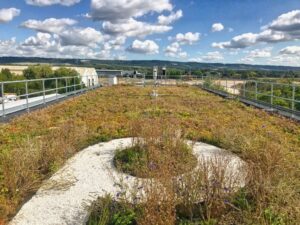
5.5 Blue Green Roofs
on Blue Green Roofs water is retained and detained in an engineered drainage media layer within the Green Roof system and controlled by smart drains.
-
-
- Variable energy savings
- Cost: Variable
-
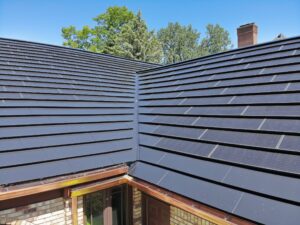
5.6 Solar Shingle Roofs
Solar power shingles, also known as photovoltaic shingles, are solar panels that mimic the appearance and function of conventional roofing materials like asphalt or slate, while performing their core task of generating electricity.
-
-
- Estimated Lifespan: 25-30 years
- Variable energy savings
- Cost: $2,100 – $2,500 per square installed
-
Types of Houses by Structure Type
(From constructorandbuilder.com and other sources.)
Single-Family Dwellings
Single-Family Homes
Approximately 70% of Americans live in single-family homes. Although this figure is probably not as high in many other countries, the single-family home is a highly desirable type of home.
It is a house that is not attached to any other house. It stands on its own property and is completely separate from other houses. Most detached single-family homes are found in the suburbs of North America. This type of house exploded after World War II, when there was a massive migration to the suburbs. Before World War II, only 13% of people lived in suburbs. In 2010, half of the US population lives in the suburbs.
In 2010, most people are looking to live in single-family homes, although with the baby boomer generation downsizing, the demand for alternatives to single-family homes is increasing (i.e., condos, townhomes and flats).
Barndominiums
A barndominium is a barn that has been partially or fully converted into living space.
Tiny Homes
A tiny home is a small house that can be fixed or mobile and ranges in size from 100 to 400 square feet. They are exceptionally efficient in terms of design and layout. They are gaining in popularity as people downsize and/or seek to live mortgage-free. They cost between $10,000 and $100,000, depending on whether you build them or they are built for you, and on the materials used.
Container Homes
A recent development in house construction and design is the use of existing containers as the main structure of the house. Smaller houses use one container while larger houses use several. You can configure them in different ways. There are companies that specialize in designing and creating container houses.
Accessory Dwelling
Attached Accessory Dwelling Units (Secondary Suites)
An executive suite is a separate unit built into a single-family home. It is often, but not always, located in the basement. It is, however, part of the structure of the single-family home and is not a separate structure. A separate structure available for rental and/or guests is a different terminology, such as a carriage house or lane house.
Attached Accessory Dwelling Units includes attached suites, interior upper (attic) suites, interior lower (basement) suites, above attached garage suites, and attached garage conversion suites.
Detached Accessory Dwelling Units (Secondary Houses)
Carriage houses and coach houses were structures on a property built to house horse-drawn carriages. Many have since been converted into separate living units that are rented out or reserved for guests.
Although we no longer need such structures to house carriages, many new builds have built them on the property to generate additional income for the owner and/or for guest accommodation. As is often the case, the term carriage house is still used, even though it was never used as a structure of this type in the past.
Other types of Accessory Dwelling Units include detached garage conversion houses, above attached garage houses, guest houses, pool houses, garden houses, etc.
Mobile Dwellings
Mobile Homes
A mobile home is a mobile structure that can be towed, but is not designed to be towed frequently like a recreational vehicle. Mobile homes are built in a factory, towed to the site and remain in place. They are inexpensive. There are mobile home parks where the mobile home is owned by a person, but the person rents the land or site. In other cases, people live in mobile homes on property they own.
Any vehicle or portable structure designed for long term occupancy, containing sleeping accommodations, a flush toilet, a bathtub or shower, kitchen facilities, and plumbing and electrical connections providing for attachment to outside systems; designed to be transported after fabrication on its own wheels, flatbed truck, or other trailer or detachable wheels; which, when arriving at the site where it is to be occupied as a complete dwelling unit, including major appliances, and ready for occupancy except for minor and incidental unpacking and assembly operation, is located on foundation supports, and is connected to external utilities and electrical system. Mobile Home does not include Modular Homes or Manufactured Homes, Type A.
Manufactured Homes
A dwelling unit which is fabricated in one or more modules at a location other than the home site, by assembly-line type production techniques or by other construction methods unique to an off-site manufacturing process and which bears a seal certifying that it was built in compliance with the National Manufactured Housing Construction and Safety Standards Code.
Modular Homes
A dwelling unit, designed and built in a factory, for installation or assembly at the building site, and which bears a seal certifying that it was built in compliance with I.C. 16-41-27-1 et seq.
Yurt
There was a time when my wife and I were seriously considering buying a plot of land and putting up a yurt. We would have no mortgage and a comfortable home.
The yurt is the main living structure used by the Mongols in Mongolia. They are a nomadic people. As yurts can be packed and moved easily, it is an ideal type of housing for them.
A yurt is round. The walls and roof are made of waterproof fabric. While traditional yurts are rather rustic, you can have custom yurts built with almost all the amenities of an ordinary house. While some people in North America live in them all year round, others use them as a second home.
They range in size from about 12 feet in diameter (115 square feet) to over 30 feet in diameter (706 square feet). They are relatively cheap to build.
Multi-Family Dwellings
A multi-family house is a house with two or more dwelling units. It is a generic term for a single-family home with an in-law suite, an apartment building, a townhome complex, a condominium, etc.
Condominium
A condominium is one of several units in a building or series of buildings on a piece of land. Each owner has title to their unit. The building is governed by an elected body (HOA in the US / Strata Council in Canada) which makes decisions on behalf of all unit owners and owns the common areas and land. It makes decisions about maintenance, grounds, regulations, etc.
Apartment
An apartment is a group of housing units in a building, all owned by one entity. In other words, all units are owned by one entity. The units are then rented to tenants. This is the main difference between a condominium and an apartment. In the case of a condominium, individual entities (i.e., a person or corporation) own the units, whereas in the case of an apartment, all the units in the building are owned by a single entity.
Townhome
A townhome is like a row house sharing one or two walls. They usually have two or three floors. Some go even higher. They differ from condos in that the owners of a townhome own both the interior and exterior of the unit and are therefore financially responsible for maintaining the exteriors. In the case of condos, the exterior of the building is maintained by the regulatory body (HOA or Strata Council).
A townhome is more like a single-family home, except that it is attached to another unit on one or both sides.
Co-op
A co-op has the physical appearance and function of a condominium and an apartment, but the financial and legal arrangement is different. In a co-op, each purchasing entity does not own a particular unit, but a percentage of the building. The owners are, in a sense, shareholders in the entire property and technically lease their unit to the co-op.
What is the advantage of a co-op over a condominium? Basically, the co-op association (the members of the co-op) can refuse to allow a potential buyer to purchase in the building. That said, the co-op association can only reject a buyer for financial reasons or because he or she does not want to follow the rules set by the association. An HOA/condo strata cannot reject a potential buyer as long as they follow the rules (e.g. age restrictions).
Five-Over-One Buildings
Why All New Apartment Buildings Look Identical – Cheddar Explains YouTube Channel
-
-
- Physical Design & Walkability
-
-
-
- Upgrade all existing buildings
-
Why So Many American Homes Are Flimsy – Cheddar Explains
Why So Many American Homes Are Flimsy – Cheddar YouTube Channel
-
-
- Physical Design & Walkability
-
-
-
- Upgrade all existing buildings
-
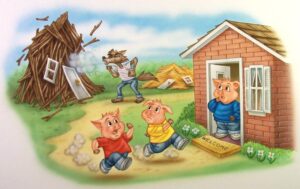
Building Construction Categories (ISO)
(From irmi.com)
Categories of building construction established by Insurance Services Office, Inc. (ISO), in its Commercial Lines Manual (CLM) for purposes of developing rates for insuring commercial property, based on susceptibility to damage by fire. The six ISO CLM building construction categories and the associated ISO construction codes, from the least fire-resistive category to the most fire-resistive category, are as follows.
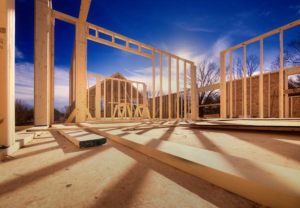
Frame—Exterior walls of wood, brick veneer, stone veneer, wood ironclad, or stucco on wood. Examples: Housing, with no more than 3‐4 stories. (Construction Code 1)
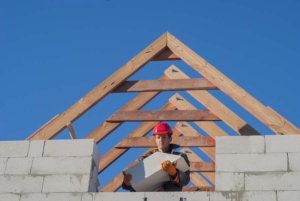
Joisted Masonry—Exterior walls of masonry material (adobe, brick, concrete, gypsum block, hollow concrete block, stone, tile, or similar materials) with combustible floor and roof. Examples: Housing, small office or retail spaces with no more than 3‐4 stories. (Construction Code 2)
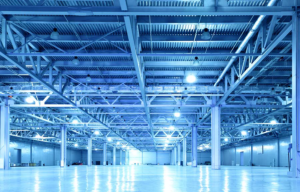
Noncombustible—Exterior walls, floor, and supports made of metal, asbestos, gypsum, or other noncombustible materials. Examples: Warehouses and manufacturing facilities. (Construction Code 3)
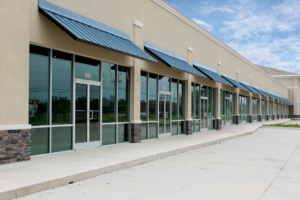
Masonry Noncombustible—Same as joisted masonry except that the floors and roof are of metal or other noncombustible materials. Examples: Shopping centers, strip malls, office buildings, warehouses and schools. (Construction Code 4)
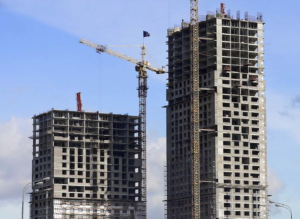
Modified Fire Resistive—Exterior walls, floors, and roof of masonry or fire-resistive material with a fire resistance rating of at least 1 hour but less than 2 hours. Examples: High and mid‐rise office buildings and condos. (Construction Code 5)
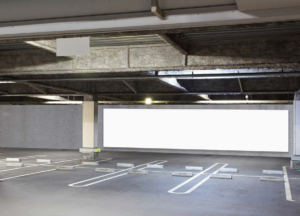
Fire Resistive—Exterior walls, floors, and roof of masonry or fire-resistive materials with a fire resistance rating of at least 2 hours. Examples: High‐rise office buildings, condos or parking garages. (Construction Code 6)
Green New Deal
The Green New Deal, explained – Vox YouTube Channel
Representative Alexandria Ocasio-Cortez (D-NY) and Senator Ed Markey (D-MA) introduced a Green New Deal non-binding Congressional resolution. It is defeated in the Senate. The proposal advocates for a “10-year national mobilization.”
Interior
Access to nature for all people (including ecosystem regeneration).
Agriculture
-
-
- Healthy and affordable food
- Eliminate crop production pollution
- Eliminate animal production pollution and greenhouse gases
-
Commerce
Clean manufacturing.
Labor
Guaranteeing a job with a family-sustaining wage, adequate family and medical leave, paid vacations, and retirement security.
Health
High quality, universal health care.
Housing & Urban Development
Upgrading all existing building and construct all new buildings to achieve maximal:
-
-
- Affordability (offer housing choice – diversity of options)
- Comfort
- Durability
- Energy efficiency
- Electrification (the process of replacing technologies that use fossil fuels with technologies that use electricity as a source of energy)
- Safety
-
Energy
Transitioning the U.S. to 100% renewable, zero-emission energy sources; building or upgrading to energy-efficient, distributed, and ‘smart’ power grids, and working to ensure affordable access to electricity.
Transportation
Overhauling transportation systems:
-
-
- Zero-emission vehicle infrastructure and manufacturing
- Clean, affordable, and accessible public transportation
- High-speed rail
-
Environment
-
-
- Clean water
- Clean air
-
James Kunstler: How bad architecture wrecked cities
James Kunstler: How bad architecture wrecked cities – TED YouTube Channel
-
-
- Physical Design & Walkability
- Green Initiatives
- Cultural Economic Development
- Entrepreneurship
-
How to Make an Attractive City
How to Make an Attractive City – The School of Life YouTube Channel
1. Not too chaotic, not too ordered.
-
-
- Variety and order (example:)
- Variety – form and color
- Order – width and height
- Not too chaotic and not too ordered
- Too chaotic is off putting
- Too ordered is boring
- Humans crave organized complexity
- Variety and order (example:)
-
2. Visible life.
-
-
- Don’t hide signs of life.
- Have work on show.
-
3. Compact.
-
-
- Humans need “balancing and moderating influence of living close to other people in uplifting surroundings.”
- Too much spacing wastes resources.
- The art of a public square: not too big, not too small.
- Make squares with 100-foot diameter.
- Must offer feeling of containment, but not claustrophobia.
-
4. Orientation and mystery.
-
-
- Balance of small streets (mystery) and big ones (orientation).
-
5. Scale.
-
-
- Biggest building show actual importance of a society.
- Ideal height of a building is five stories.
- Make buildings dense, compact, and tight.
- Make occasional huge buildings for something special for all of humanity.
-
6. Make it local.
-
-
- Don’t make buildings look just like everywhere else.
- Cities need to use local materials and forms.
- Cities need to have strong characters.
-
